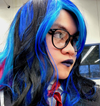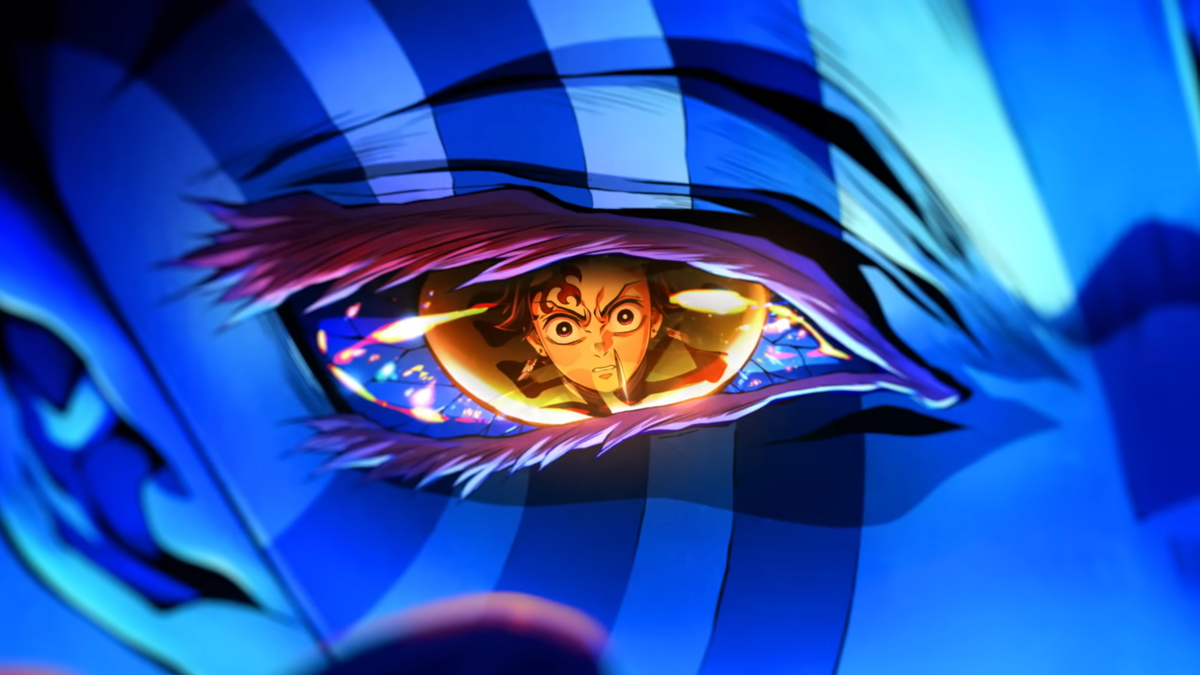
In 2003, The Lord of the Rings concluded its cinematic journey of J.R.R. Tolkien’s epic with The Return of the King. A trilogy whose extended editions total approximately an 11 and a half hour adaptation of over one thousand pages of literature (depending on the edition). In 2014, The Hobbit concluded its trilogy with The Battle of the Five Armies. These three films’ extended editions approach almost nine hours of film, adapting a singular, approximately 300-page book. While criticized for a plethora of reasons, the main point of contention towards The Hobbit films is how they stretch a shorter story into three arduously long features. On the weeb side of things, one of my favorite one-shot manga, Look Back, received a 60-minute film adaptation to cover its 144-page story. This includes opening logos and credits.
Now, what does any of this have to do with the Demon Slayer: Infinity Castle? Well, it paints a critical comparison of why this latest film in the popular shonen series fails for me. Similar to The Hobbit, Infinity Castle is the first of three films that will cover Demon Slayer’s final arc. This 2025 release uses its 2-hour and 35-minute runtime to cover the first 17 chapters (approximately 325 pages) of the story, pages that are primarily just fights, occasionally cutting to flashbacks. Over half an hour of that time is dedicated to a two-chapter (36-page) backstory. The story within these pages is a mediocre, but still enjoyable read thanks to its brisk pacing. However, the anime adaptation’s release method turns this snappy story into an excruciating endurance test. A similar issue that The Hobbit fell prey to because of this three-film format.
Even if Demon Slayer was a masterclass of storytelling, pacing is a vital factor in communicating said story effectively. Infinity Castle is not slow or drawn out for a deeper narrative and thematic purpose. It’s slow for the sake of making its style over substance garish. Coupled with this kicking off the climax for a shallow story with thinly written characters, you have a visually and auditorily gorgeous work of art that’s a disaster of narrative composition.
Demon Slayer’s latest cinematic venture begins right where the previous season left off. Protagonist Tanjiro, the Demon Slayer Corps, and the upper swordsmasters of the Corps called the Hashira, descend into the abyss of the Infinity Castle: the mind-bending stronghold of demons. The goal is simple: locate and kill the primary demon, Muzan Kibutsuji. As a disclaimer, I will only be diving into details and events revealed by the trailers and other promotional materials. No other spoilers beyond officially known quantities.
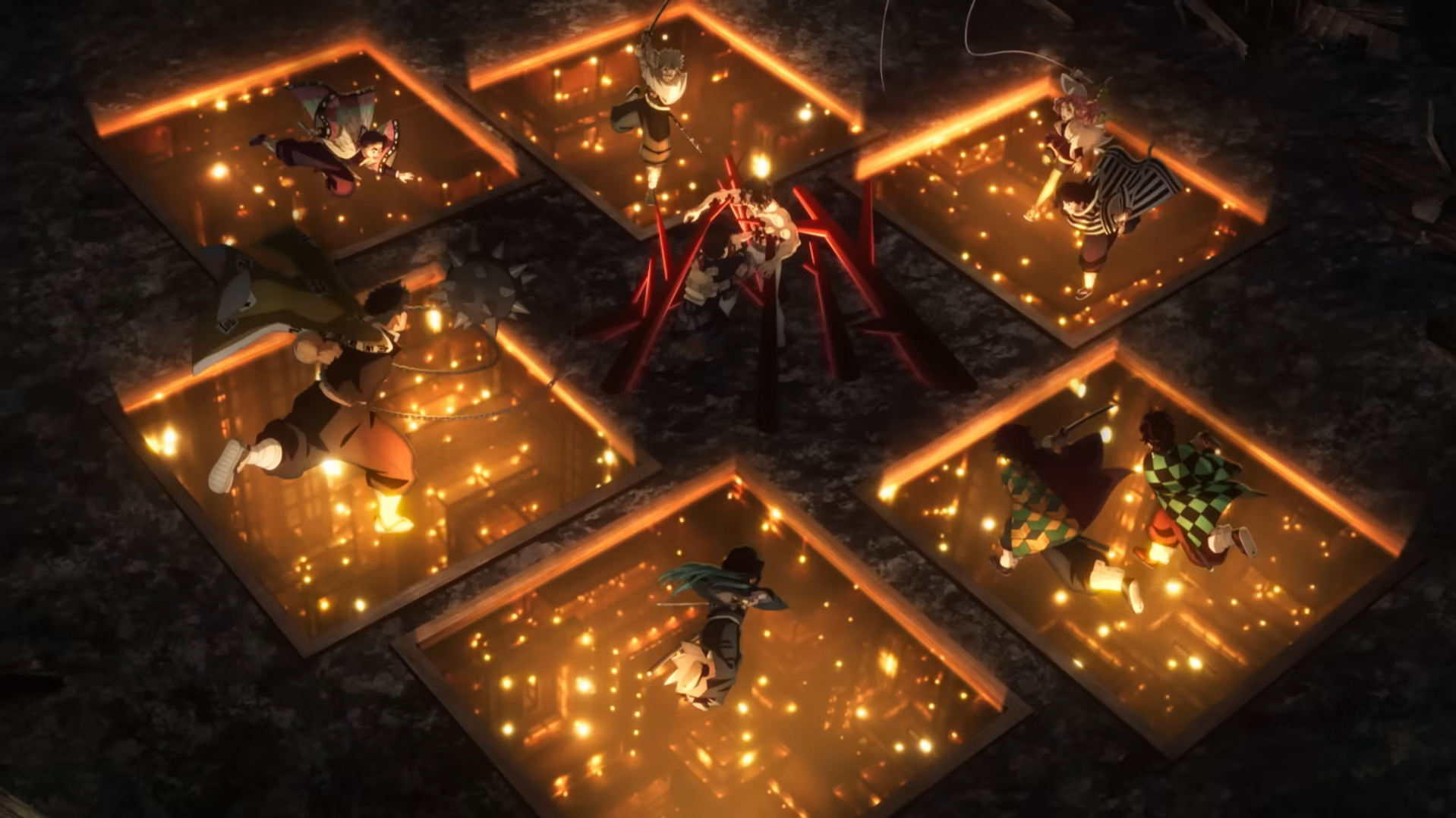
What immediately struck me was the most acclaimed facet in Demon Slayer’s anime adaptation: The stunning animation by the studio Ufotable. From the heartpoundingly gorgeous tracking shots of the Hashira descending into the labyrinth of Muzan’s lair, to the frenetic action set pieces that masterfully straddle the oxymoronic line of visual clarity within the blinding speeds of its incomprehensible movements. It’s an utterly entrancing, overstimulating feast for the eyes. The visceral visuals are beautiful and are literally breathtaking in the way they build tension. Often, I realized I had forgotten to breathe until a sigh of relief or gasp in anguish escaped my lips when our heroes dish out or receive damage. Each combatant doesn't feel like an immortal rag doll. Every sword slash feels meaningful, as their ability to fight deteriorates when they slowly succumb to their wounds.
And this is only one component in what makes the film’s aesthetic direction work so well. Infinity Castle makes use of one of the more overlooked aspects of such a visually dominated medium: audio. Sure, the usually praised parts, such as the music and voice acting, are no slouch. Yuki Kajiura and Go Shiina’s score continues Demon Slayer’s streak of the franchise's impeccable soundtracks, blending Japanese folk instruments and chants combined with electronic elements to create tunes that sounds familiar yet distinct.
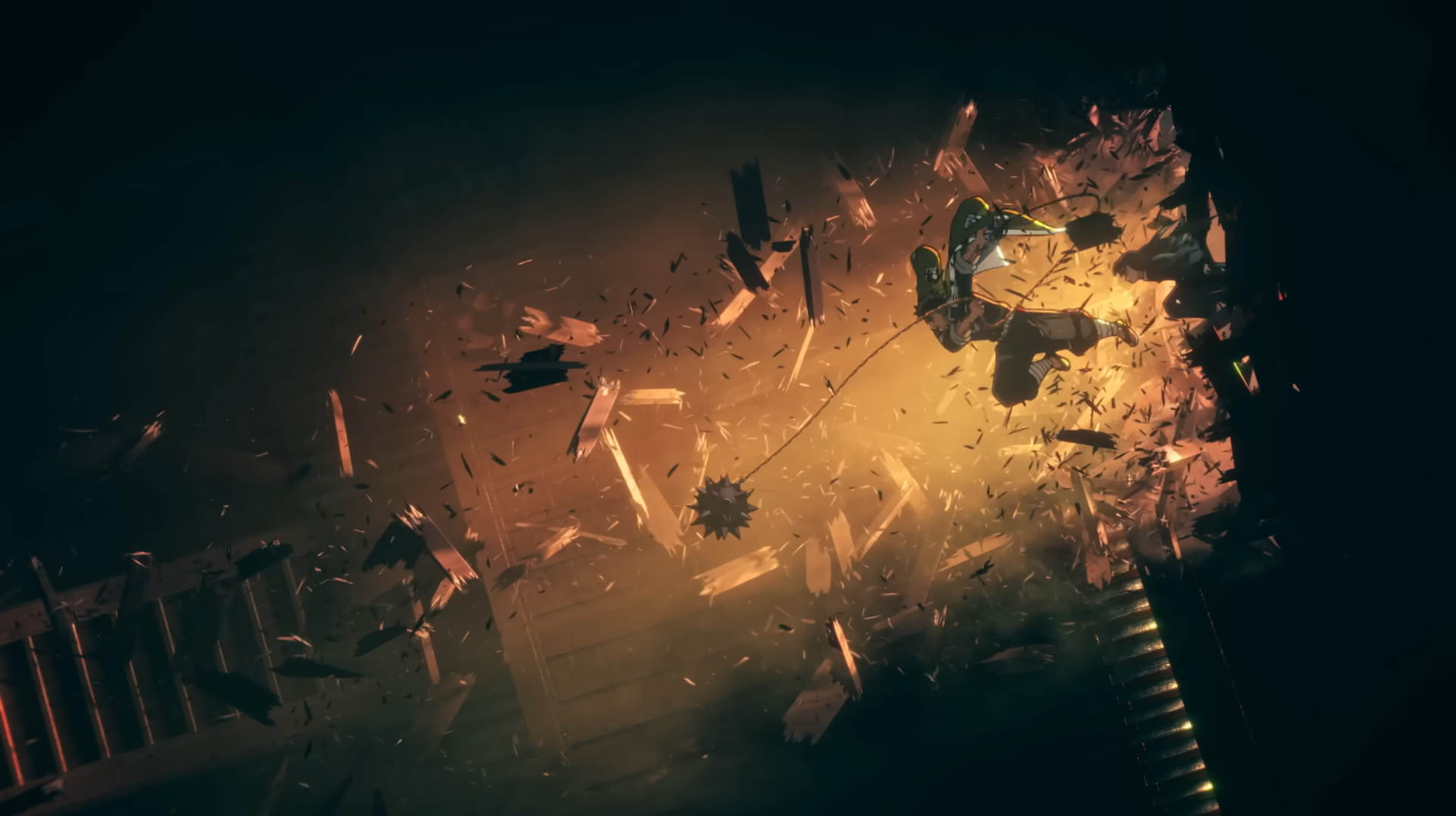
I watched the film dubbed, and the English VAs deliver phenomenal performances, triumphantly taking the mantle of these characters as they head into the final juncture of the series. Zach Agular is incredible as Tanjiro, capturing his merciful kindness and agonizing screams of pain and heartache during the heat of battle. While I have issues with their characters’ storylines, Erika Harlacher and Alex Le are the throat GOATs that balance the tender insecurities of Shinobu and Zenitsu, and crush their battle cries in their respective bouts.
But it’s the sound mixing that elevates these components. Often, the payoff of good audio balancing is the final result being invisible to the audience, immersing the viewers in the world on screen. If something is the least bit off, it sticks out like a sore thumb. Yet much like the animation, Infinity Castle’s sound mixing is so good that I sat there in awe at the amount of work it took to achieve this level of quality. With how kinetic the action is, from sword clashes, elemental effects being unleashed, punches thrown, enemy fodder crawling around, to our heroes being thrown through the rooms of the Infinity Castle, it’s astonishing how all of these auditory elements are identifiable within the chaos.
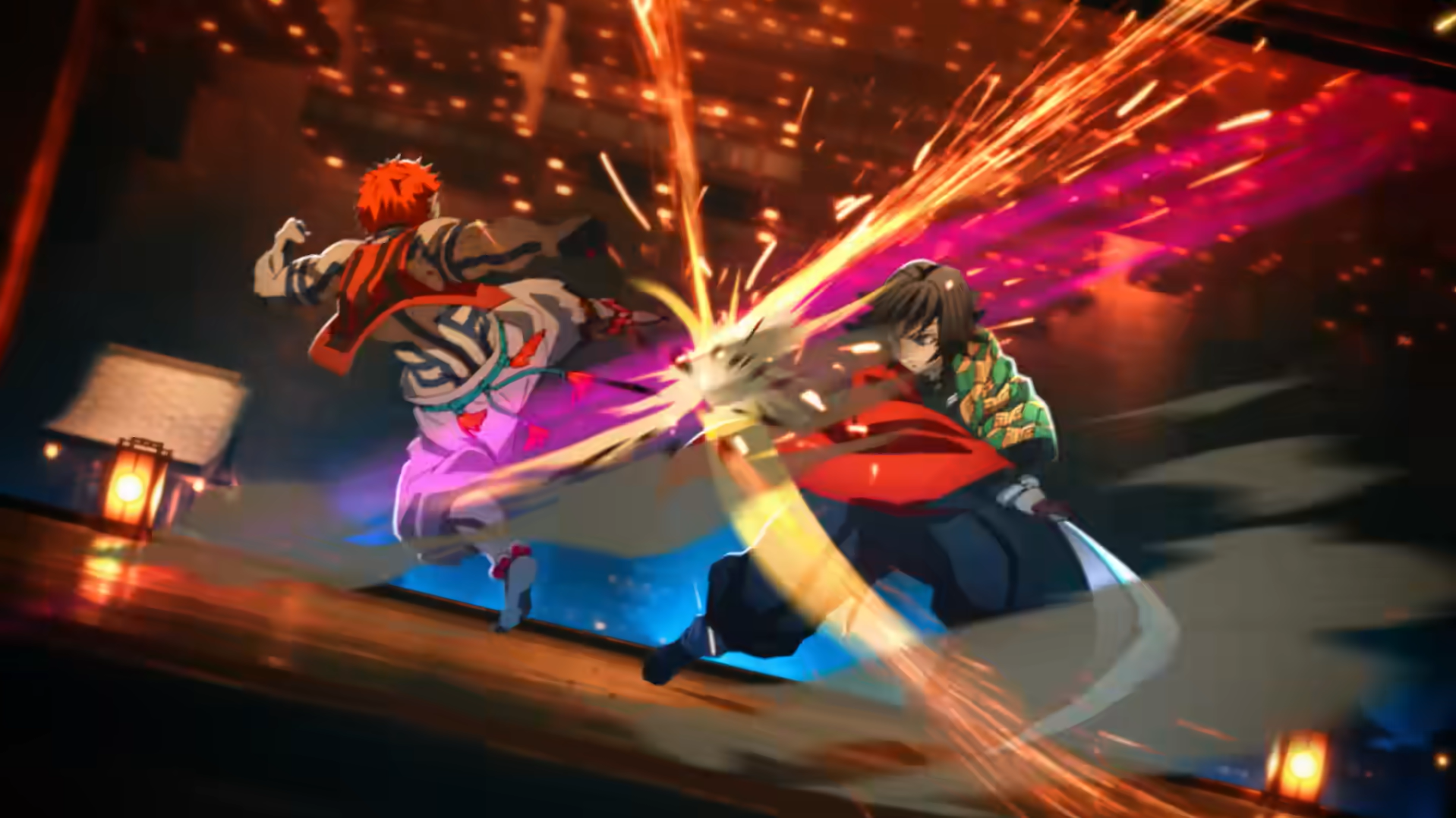
Everything is loud and bombastic, but balanced in a way to highlight all of its layers perfectly, depending on what is prioritized. A big reason that puts me off watching dubs is how often the stellar voice acting gets drowned out by the music and sound effects. I’m happy to say this film does not have that issue. When the music wants to swell, it billows. When the voice work is in the spotlight, the actors roar. Each sound effect of sword clashes and explosions extends off the character’s grunts and battle cries, making them feel like an extension of their voices.
With that being said, I do have a few nitpicks towards the visuals and audio. Despite the acting mostly being stellar, some of the nameless characters give flat performances. They’re only onscreen for at most a minute or two before disappearing, so this is more of a nitpick.
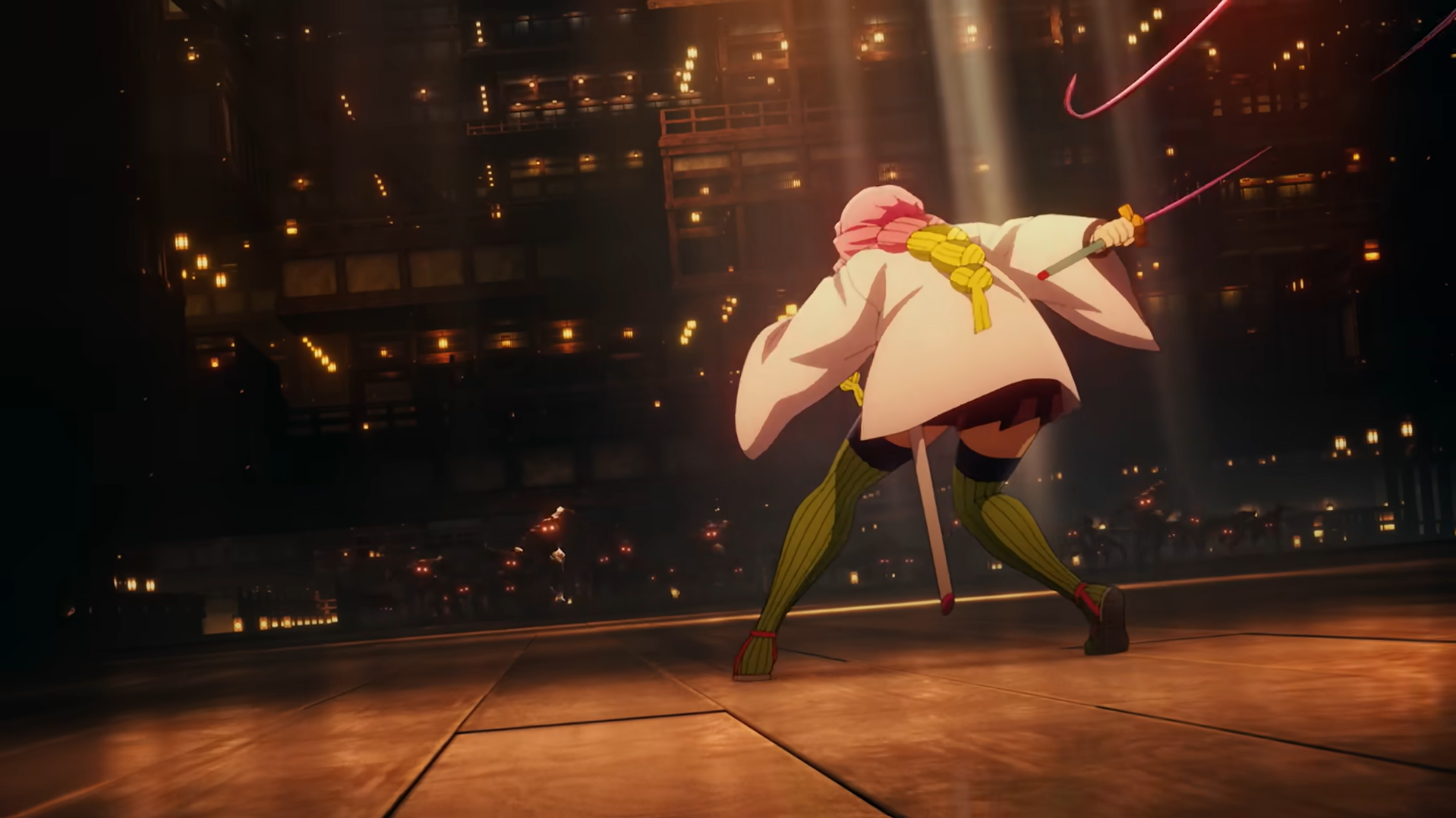
However, Channing Tatum plays a pivotal character during the third act, and the execution of this big-name celebrity’s performance is a mixed bag. He delivers almost every line nonchalantly. It’s this repetitious tone that makes it sound like he’s phoning it in. On the other hand, it kinda fits the character he’s playing. He plays a DILF with a warm heart, so this unbothered, monotone delivery does capture that vibe, whether intentional or not. Like I said, mixed.
As great as the cinematography is, there are occasional, but understandable dips every now and then. Barring some creative shots, most of the typical anime monologue scenes feel generic in the way they look. Most of these are dull-looking still images, but one technique I found overused is rotating the camera around the characters. This is a popular method for animators to flex their prowess, creating a three-dimensional space around these 2D elements. It's impressive, no doubt, but Ufotable relies on it a tad too much both in and out of the action for my personal taste.
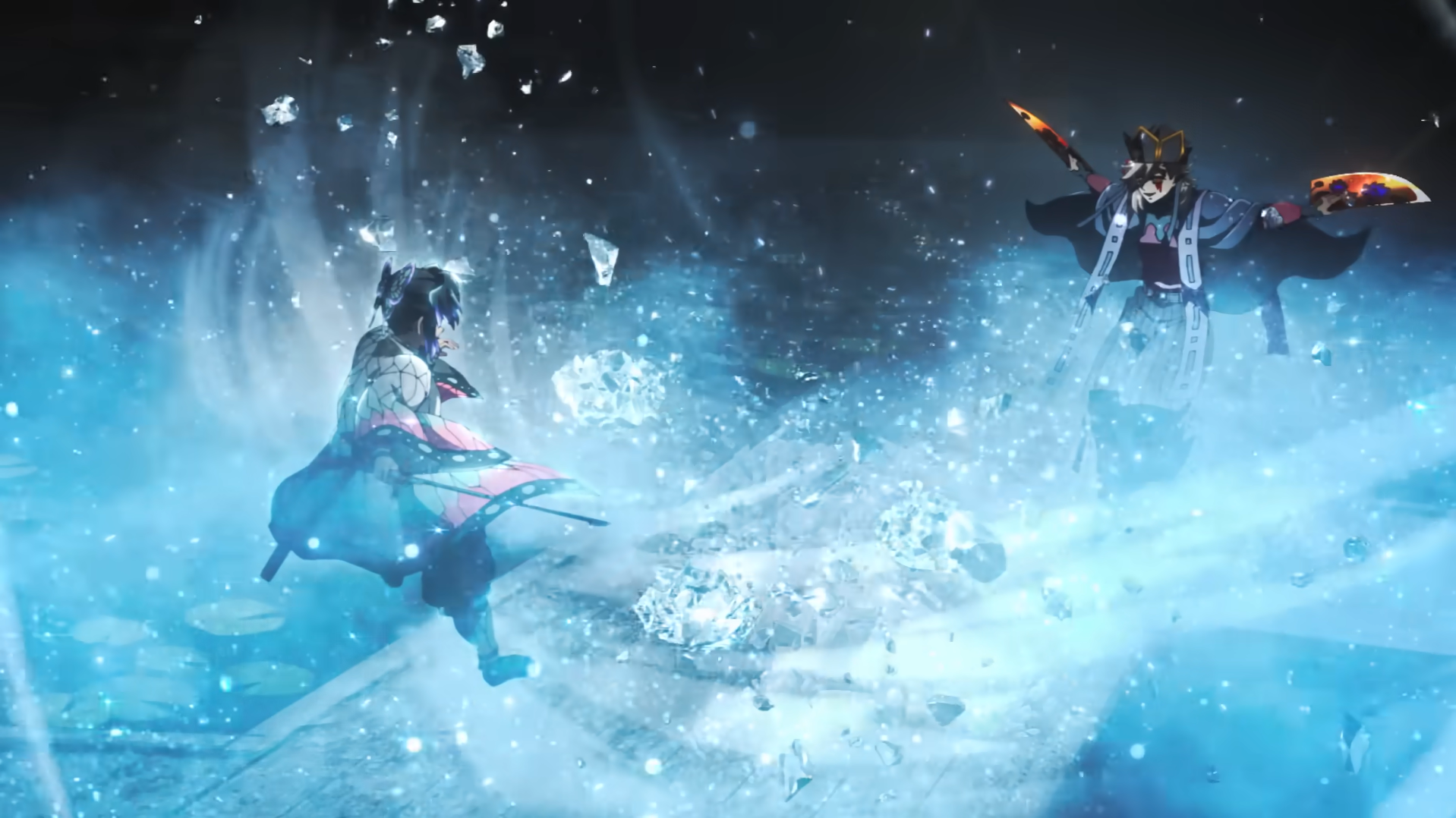
My main gripe is how tame the creativity of the movie’s namesake is. The Infinity Castle starts out with so much promise. The visually arresting movement of the walls and floorboards as the shifting surfaces expand in all directions. Unfortunately, for how alive this location feels, each bout fails to utilize this unique setting in interesting ways.
The primary method Demon Slayer employs to demonstrate the scope of the location is “Ruh oh, someone got knocked off a platform and it’s a big fall because the building is super tall. Some might even say infinite…”. The most the setting is taken advantage of is with a trap door randomly springing early in the feature, and never again. Hopefully, the untapped potential of the setting gets realized in the subsequent two movies.
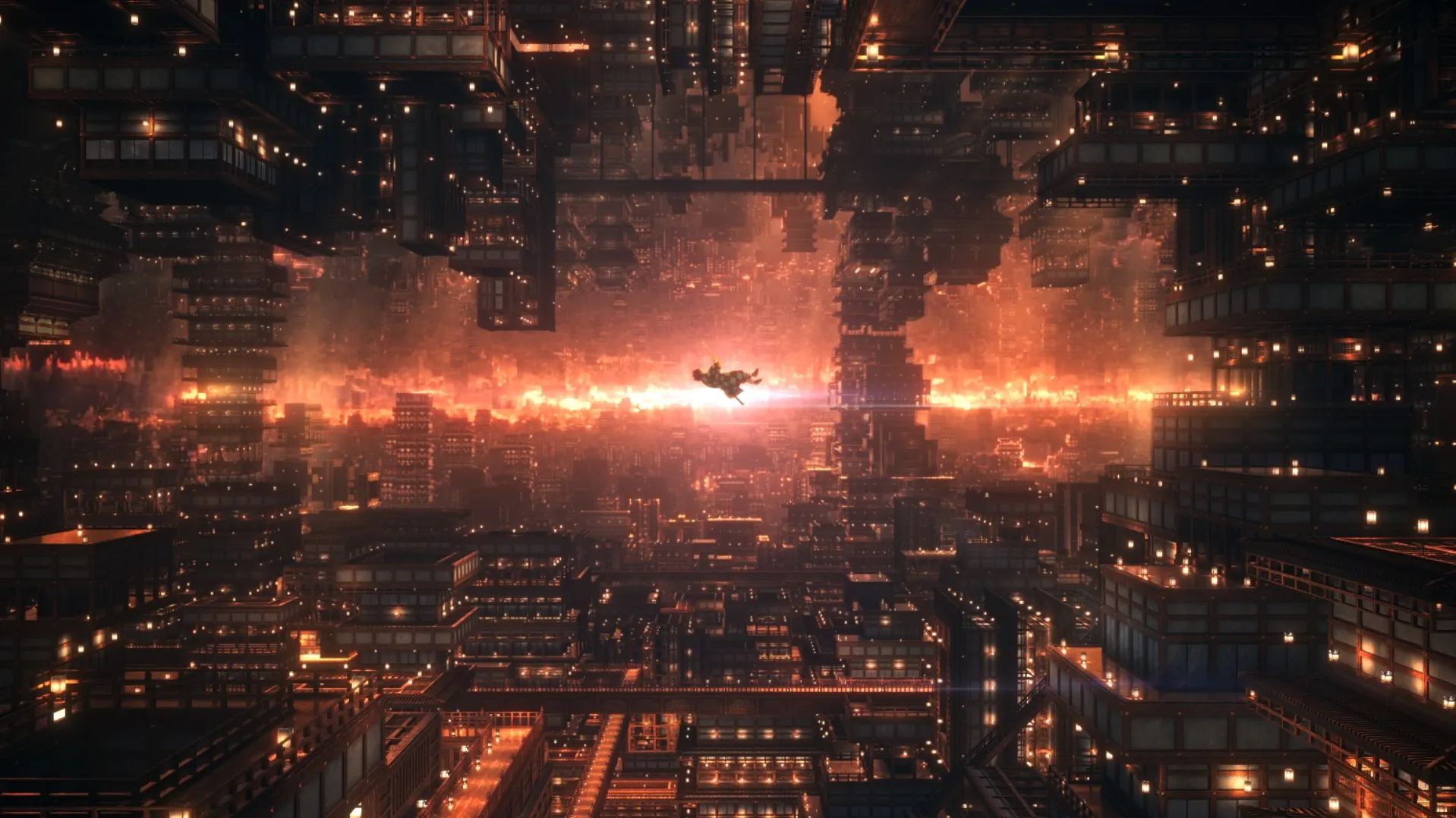
So, from the cinematic language of the visuals and sound, Demon Slayer: Infinity Castle is worth the price of admission alone purely to see this artistic achievement on the big screen. Unfortunately, that beauty is only skin deep, as the movie fumbles on a narrative front. Before diving in, I want to preface how I will approach my critiques. With this film being part one of three, I want to judge it on what it sets out to achieve, instead of knocking down unanswered mysteries or missing characters due to its incomplete nature. As expected, most of the cast is absent outside a few action snippets. The runtime is primarily utilized to hone in on three major fights, highlighting the heroes of Shinobu, Zenitsu, and the pair of Giyu and Tanjiro.
The stories woven within these bouts range from subpar to decent, rounding out the overall plot to be mediocre. Not good, not terrible, just fine. It continues Demon Slayer’s trend of being primarily hype moments and aura with minimal character depth. This is not a bad thing, or at least it shouldn’t have to be one. For a sub 20-minute read of 17 manga chapters, I easily turned my brain off from the narrative shortcomings and had fun witnessing personable characters slap each other with their sharp sticks. And when the story poorly attempts to flesh out these fighters to add weight to their emotionally hollow sword swings, these feeble moments generally last a few panels or pages.
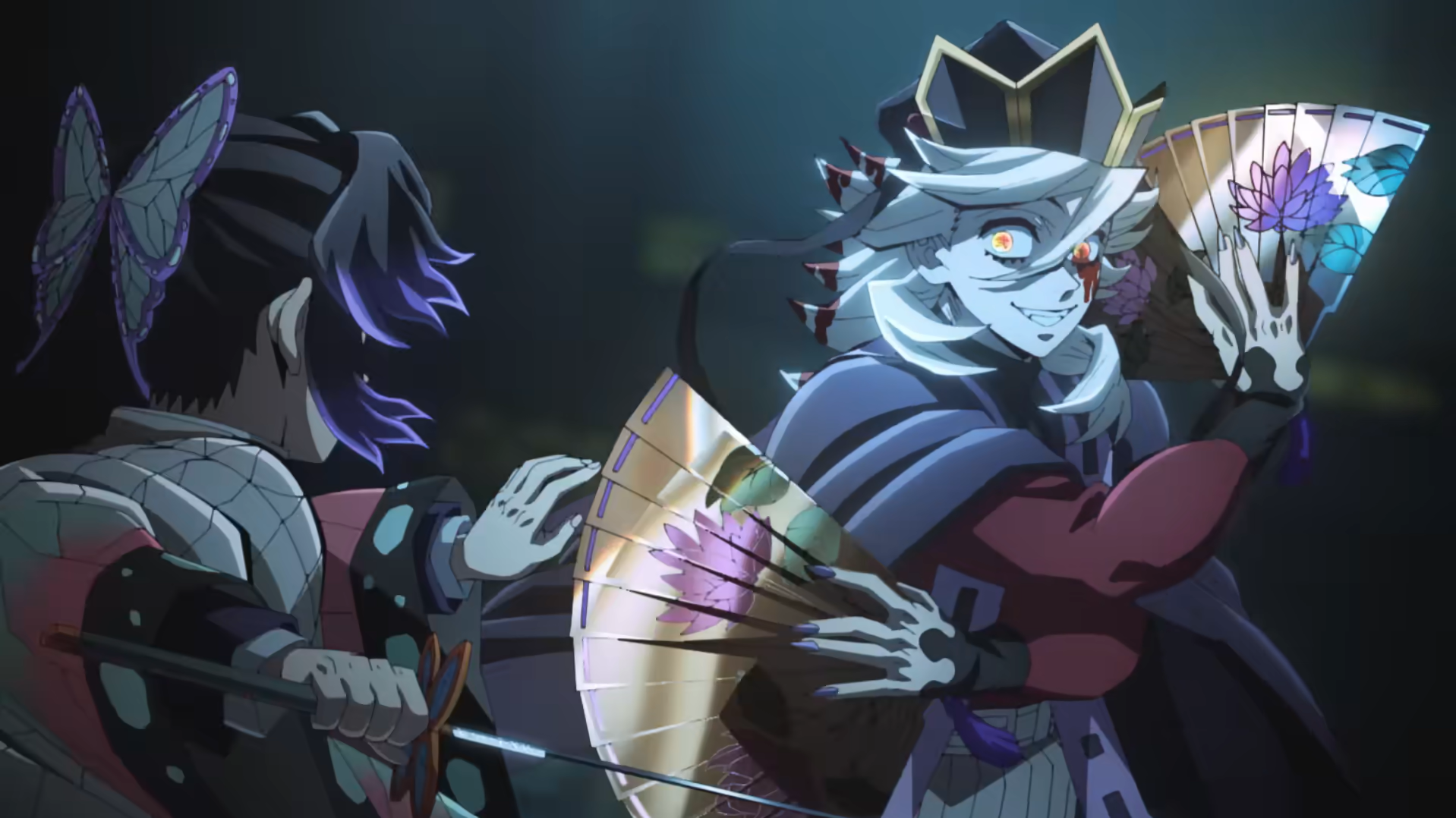
That blessing is lost when translating page to screen. From the action to random one-off lines during random one-off flashbacks, the film self-aggrandizes each scene as a boisterous declaration of self-importance. It demands your attention as it takes its sweet time to flex its animation prowess, no matter how pivotal or unimportant something is. It gets grating quickly, the abuse of the beefy 2-hour 35-minute runtime making the film a narrative chore to endure.
While I found the concept of turning this final arc into three features to be a baffling idea upon its inception, it’s not something I wanted to immediately brush off. Demon Slayer’s story is already so shallow that more screentime has potential to flesh out its underbaked elements. Painfully, my brows furrowed watching how Infinity Castle confuses length with depth in its many, many- did I say many yet? Just making sure it’s apparent that there are many flashbacks.
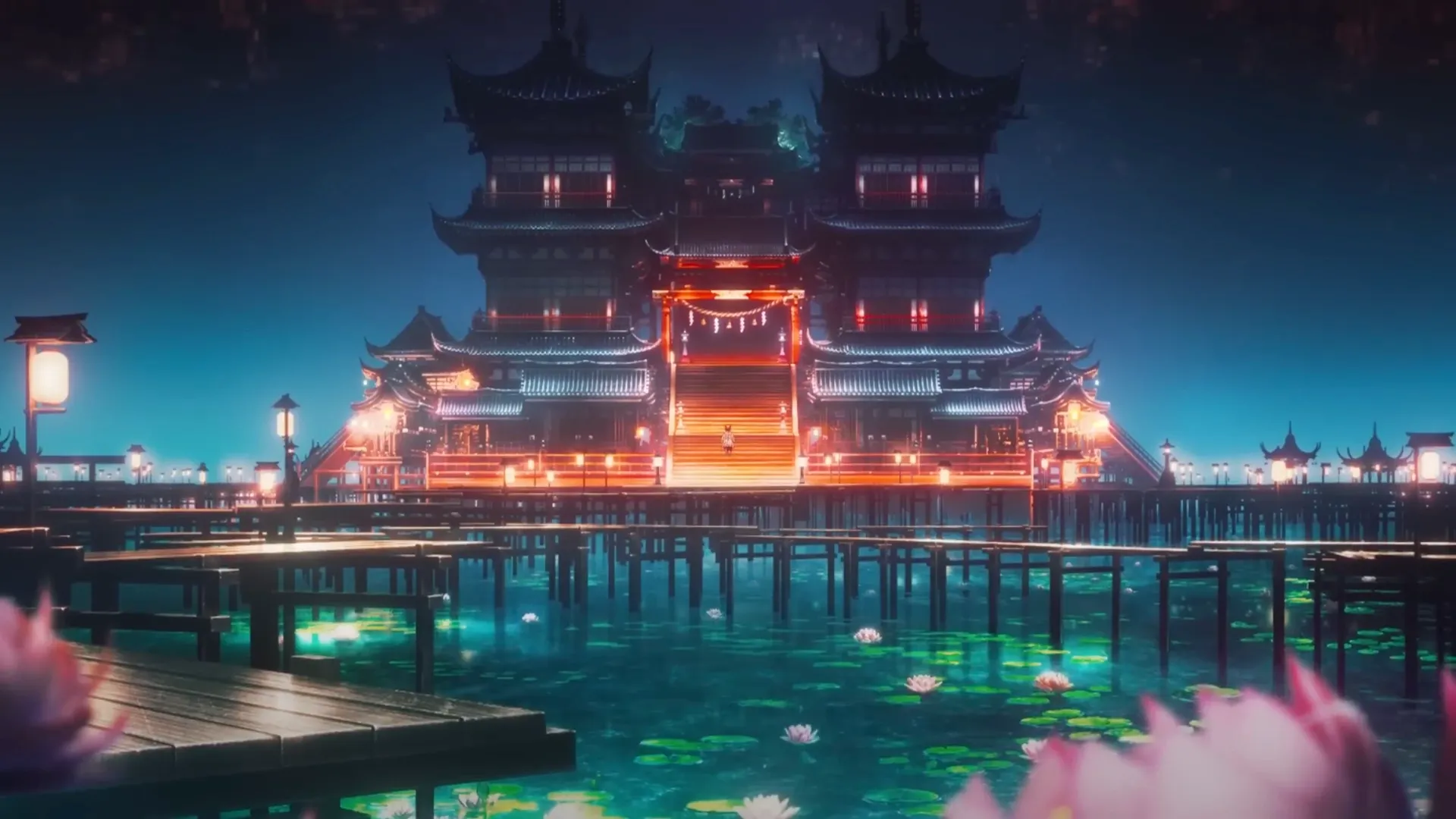
What were brief moments of recollection in the source material are now drawn out exercises of tedium, failing to make any meaningful additions to justify their extended runtime. It’s no longer watching mediocrity in an animated format. Instead, it’s stretching that mediocrity so thin that any entertainment factor from the manga’s succinctness has been torn in half, akin to unraveling threads of a string on both ends before the slightest tug snaps it in two.
Additionally, the way they are structured fails to make the transition from the page to the screen. In manga, interspersing the action with a panel or page of reflection doesn’t impact the flow of the present. A literal side bar on the larger canvas of the page. In contrast, it feels choppy when cutting from action to lingering flashback purely to stay faithful to the structure of its source material.
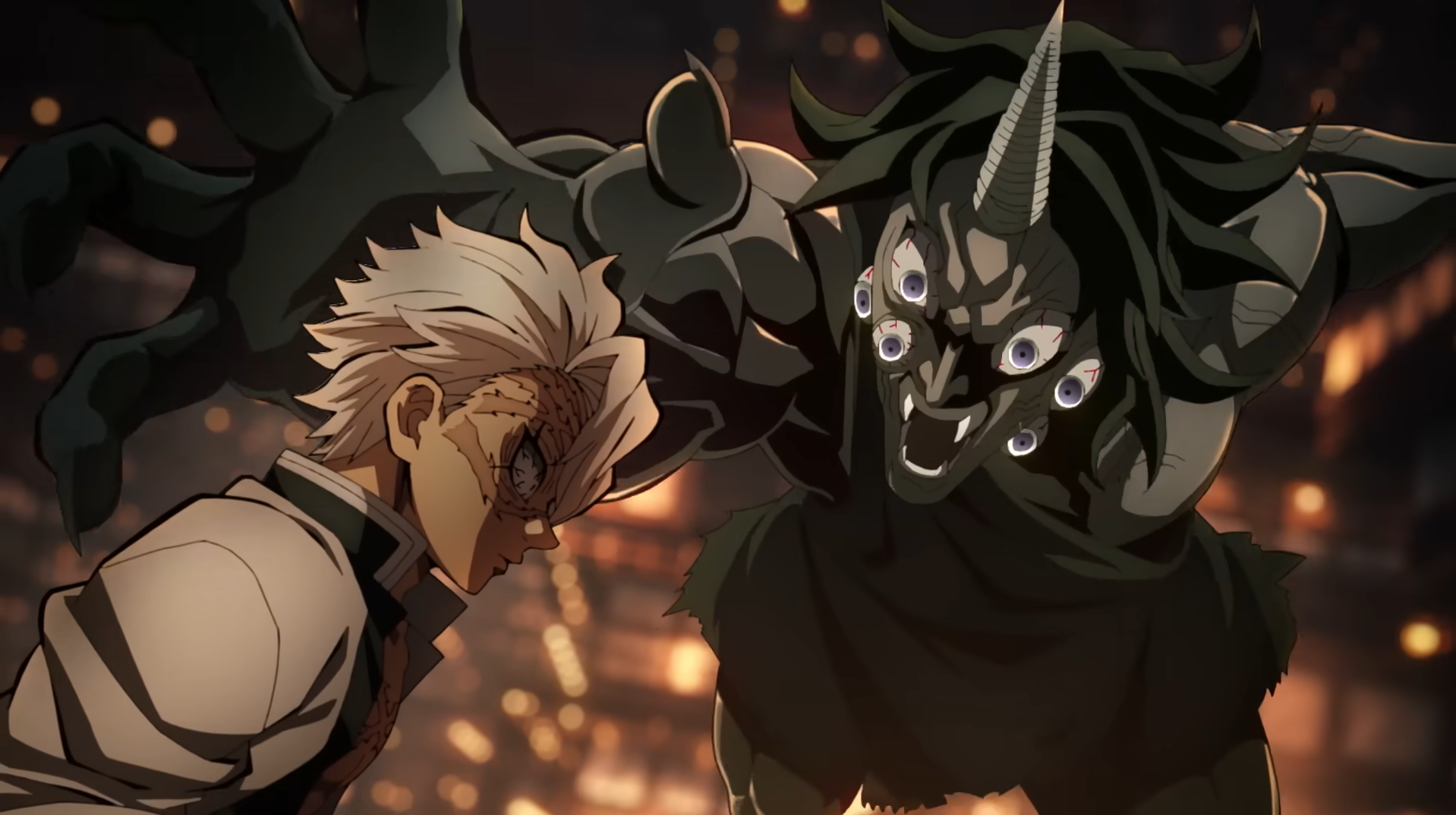
Relying on backstories isn’t anything new for Demon Slayer. It’s a staple for plenty of anime. But this franchise consistently utilizes this narrative tool poorly, with it feeling the most egregious here as the start of a climax. Infinity Castle’s exorbitant desire to spam this storytelling technique is the culmination of the biggest issue I have when examining the overall series through even the most modest of critical lenses. Leading up to this final arc, most of the key players, whether Hashira or Demon, have the same level of depth as a puddle of water under the sunshine of a warm spring day. So it's already starting on a rocky foundation shoddily built by four seasons of television, or 140 chapters of manga.
Consequently, this folly comes to bite this junction of the story in the rear, desperately relying on flashbacks like a crutch to introduce a trait that the series failed to establish with its lack of screentime. It’s this contrived structure that makes the character progression for most of the cast feel like a straight line instead of an arc, as the characters quickly resolve their “growth” just as quickly as they’re unearthed in their callbacks.
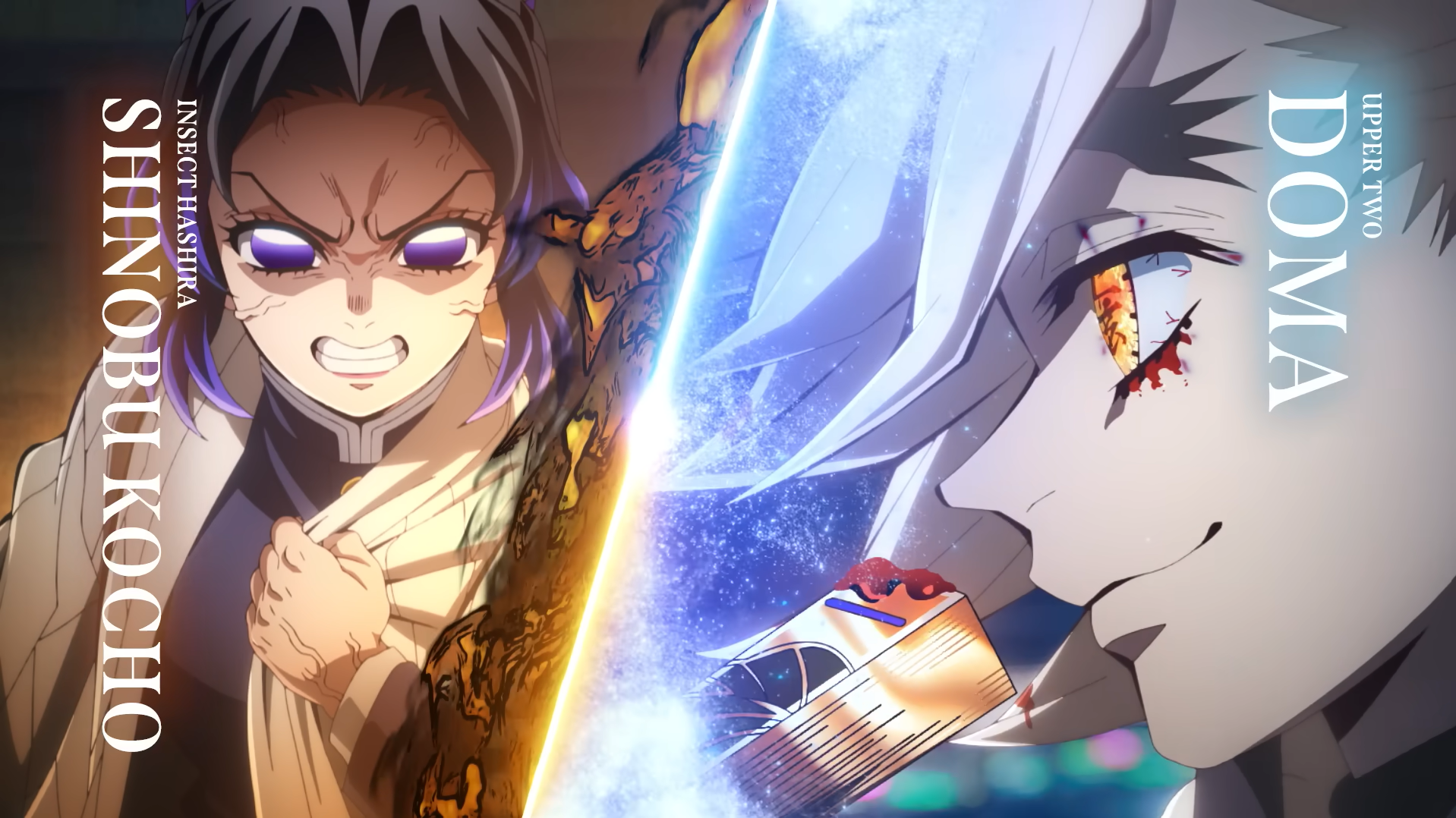
Shinobu in particular is the most painfully underwritten of the bunch. She is a character plagued by grief, and to its credit, a decently established layer with a brewing anger under her blank smile. Her bout against the Upper Rank 2 demon named Doma attempts to extrapolate on where her anger stems from, but the trope of lengthy anime monologues is at its worst here as the insect-themed swordswoman lectures about her insecurities.
The problem is neither the series nor this movie expresses this through her actions, making the core trait she must grow from feel hollow. I don’t make this diabolical comparison lightly, but Shinobu’s backstory has similar framing and only slightly better execution than Infinite from Sonic Forces. For those not in the know, allow me to translate: Not good.
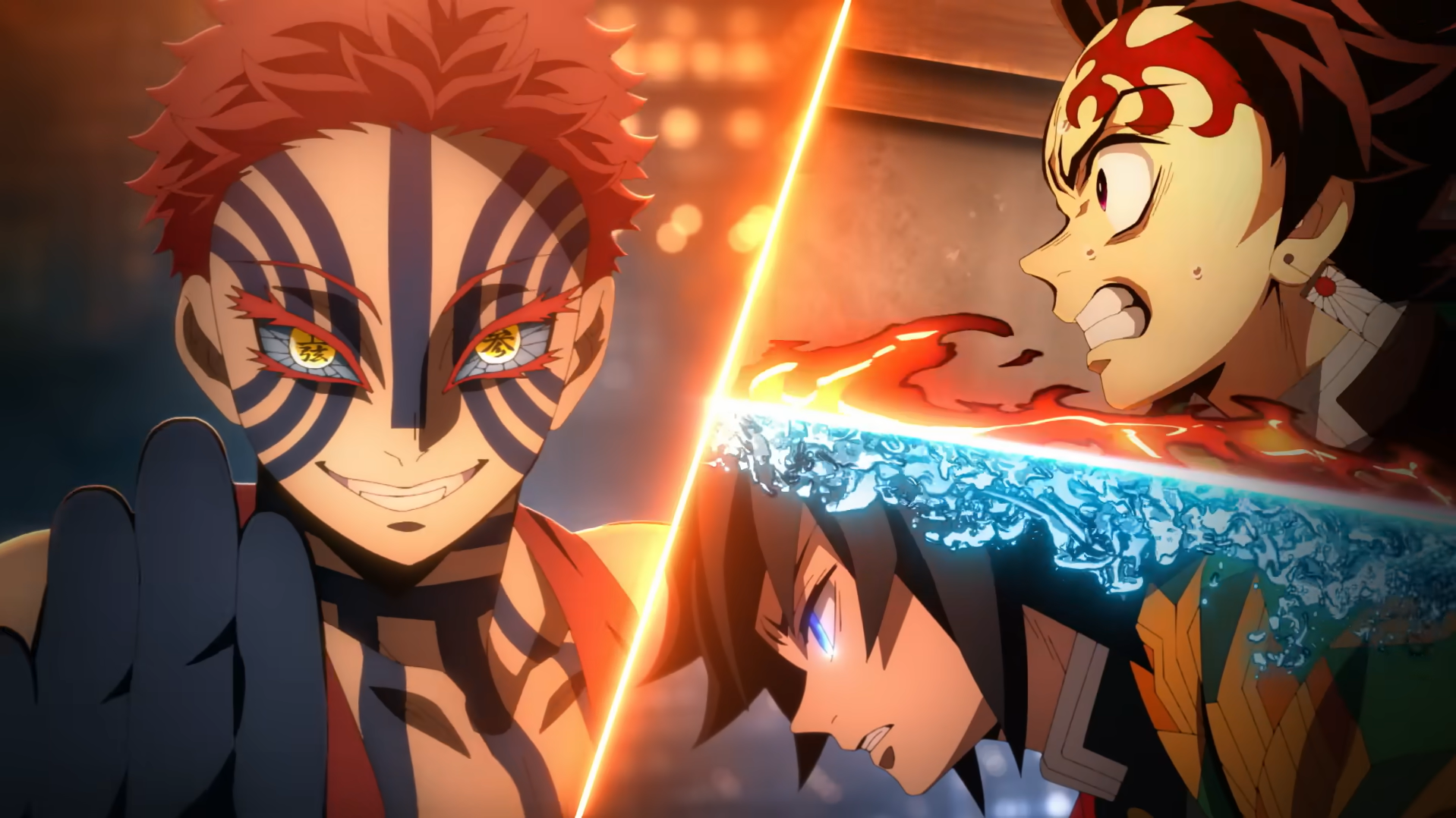
The character I’m the most conflicted on is Akaza, returning from Demon Slayer’s previous feature titled Mugen Train. His return to the big screen is the emotional crux of this junction of the arc, delivering the series’ storytelling prowess in its top form. However, that brightness woefully spotlights the glaring cracks in the franchise’s narrative armor. The Upper Rank 3 demon is given the longest flashback in the film. Over half an hour of screentime is dedicated to adapting his two-chapter (or 38-page) backstory.
In contrast to other flashbacks, there is at least a substantial enough story to justify this extended runtime, even with some occasional meandering. The tale that is woven is beautifully tragic, filled with so many rich emotions of joy, anger, sorrow, and loss. If this were its own self-contained short film, I would sing its praises for how phenomenal it is.
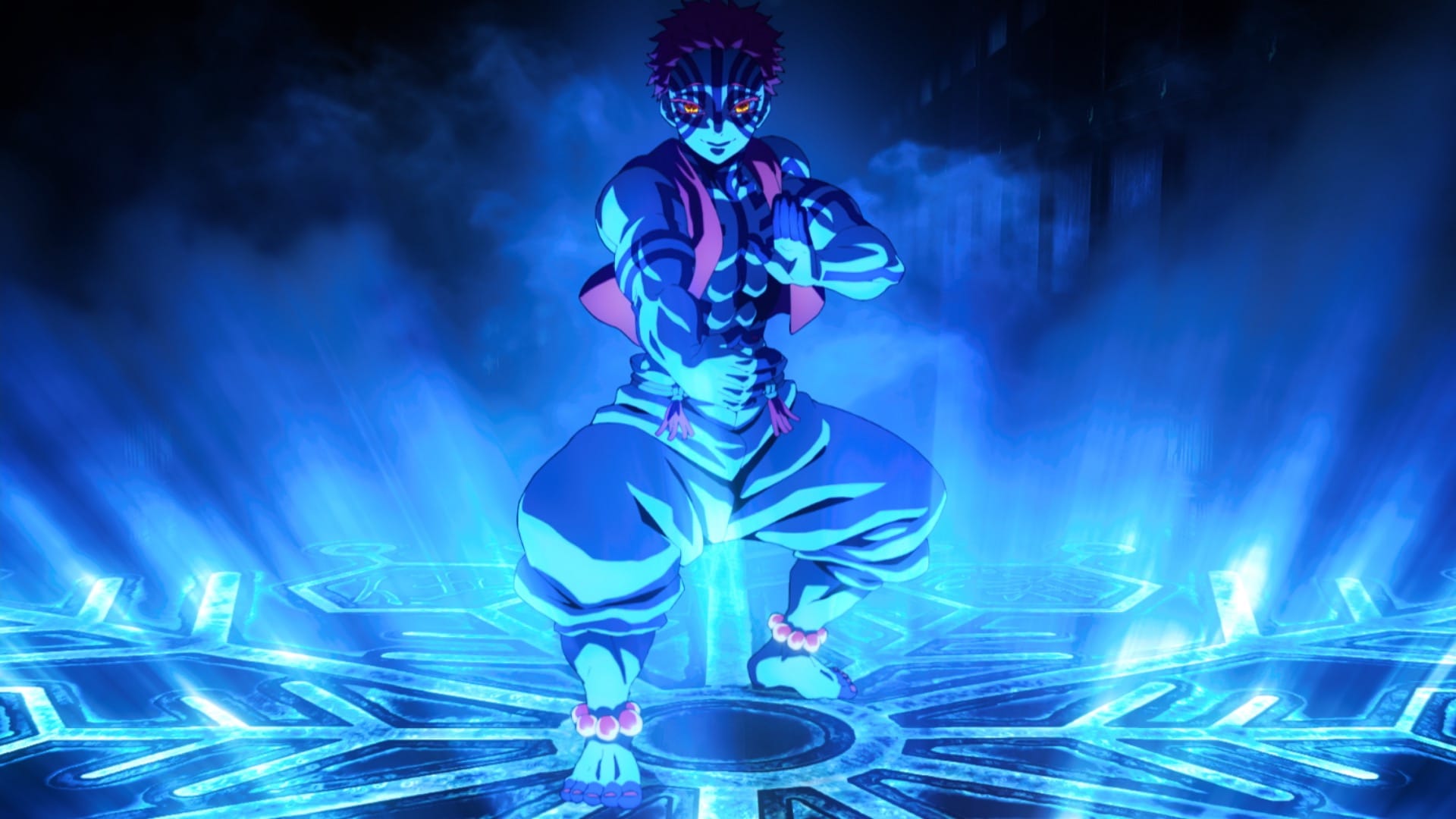
Unfortunately, it’s attached to a movie called Demon Slayer: Infinity Castle. Leading up to his return, calling Akaza a character would be a massive stretch of the word. He pops in randomly for one fight in the Mugen Train arc, dips for three seasons outside a few extremely brief snippets, before appearing again to fight in his domain. The brawler’s paltry presence through the series feels negligible in crafting a compelling character outside his surface-level trait: Bro loves getting strong, and bro loves punching things to show he is strong. To the story’s credit, this is the critical crux the flashback attempts to flesh out. I see what they were going for in terms of making this shallow front be rooted in deep emotional complexity.
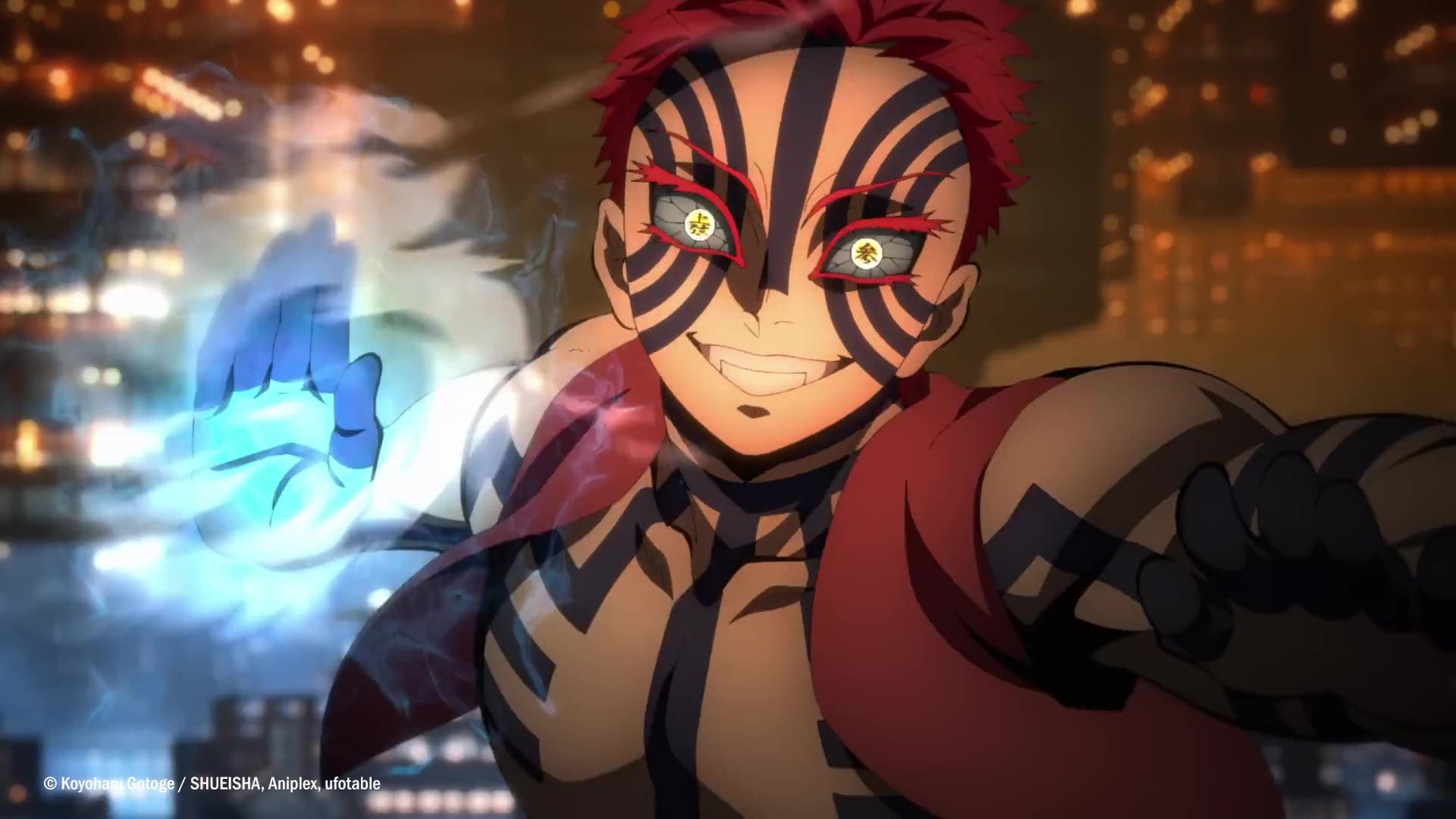
In practice, it misses the mark. Both in his minuscule appearances through the series and in this movie, the Upper Rank 3 demon’s characterization fails to establish narrative or personal stakes to the overall story and his character. We do get occasional hints of his deeper psyche during his fight in this film, clues that depict the thematic clash between him and Tajiro beyond fists and swords. But their inclusion feels contrived for the sake of trying (and failing) to give subtextual characterization for a shoddily constructed character.
Thus, in line with the other flashbacks in the series, it just kinda happens with no build-up to facilitate the most shallow growth. Again, a straight line progression instead of an arc. A one-dimensional character that just so happens to have a three-dimensional backstory, instead of fleshing out a one-dimensional character using a three-dimensional backstory.
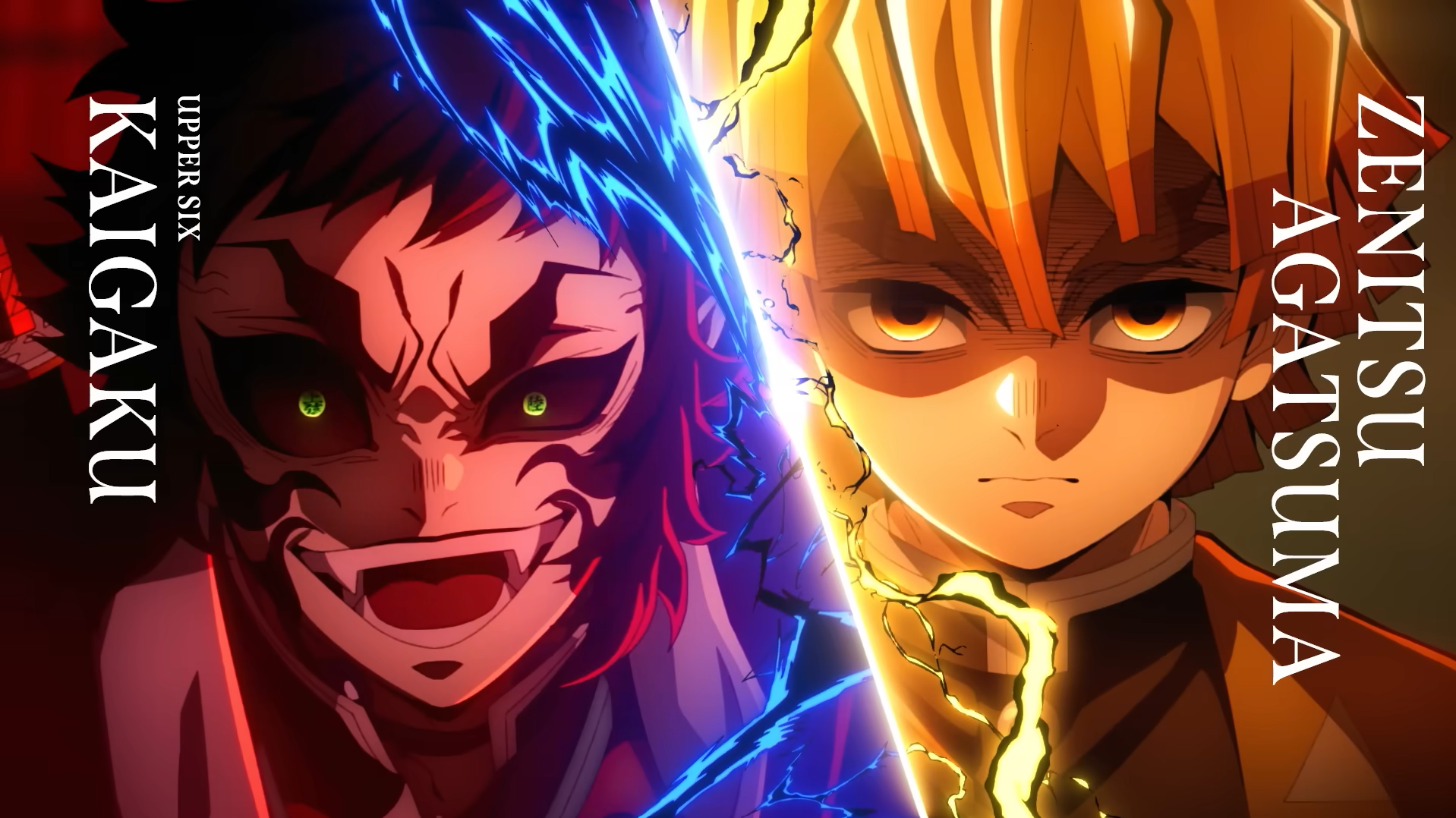
That’s not to say Infinity Castle is completely absent of decent character moments. Shockingly, one of the highlights is the cowardly thunder swordsman Zenitsu. When this wannabe womanizer creep is one of the more cohesively written characters, you know things are dire. Through various fights and storylines, we see some semblance of progression as he tries to improve past his constant crying and fear. Witnessing him break past, or revert back to his old ways. As a result, it doesn’t feel out of left field when the blonde combatant morphs into someone unflinching when initiating a fight against one of the Upper Rank demons. Granted, it’s overall not a great arc, with the main detraction being how Demon Slayer obnoxiously overplays his crybaby personality. And of course, his advances towards the female characters always feel icky.
Still, there is at least a clear trajectory for his setup and payoff that makes his development more earned in comparison to the other fighters in the castle. The only major gripe I have regarding his role in this film is the demon he fights. Upper Rank Six falls victim to the same pitfall that claimed the other demons and Hashira: random flashbacks failing to build a depthless character. Legit when Zenitsu acknowledged Upper Six as some sort of known quantity, my jaw hit the floor as I let out an audible “WHO?” in the theater. I had just binged the show and manga a week before watching the movie, too. Regardless, as a thematic foe for the blond swordsman to overcome, he does the job fine.
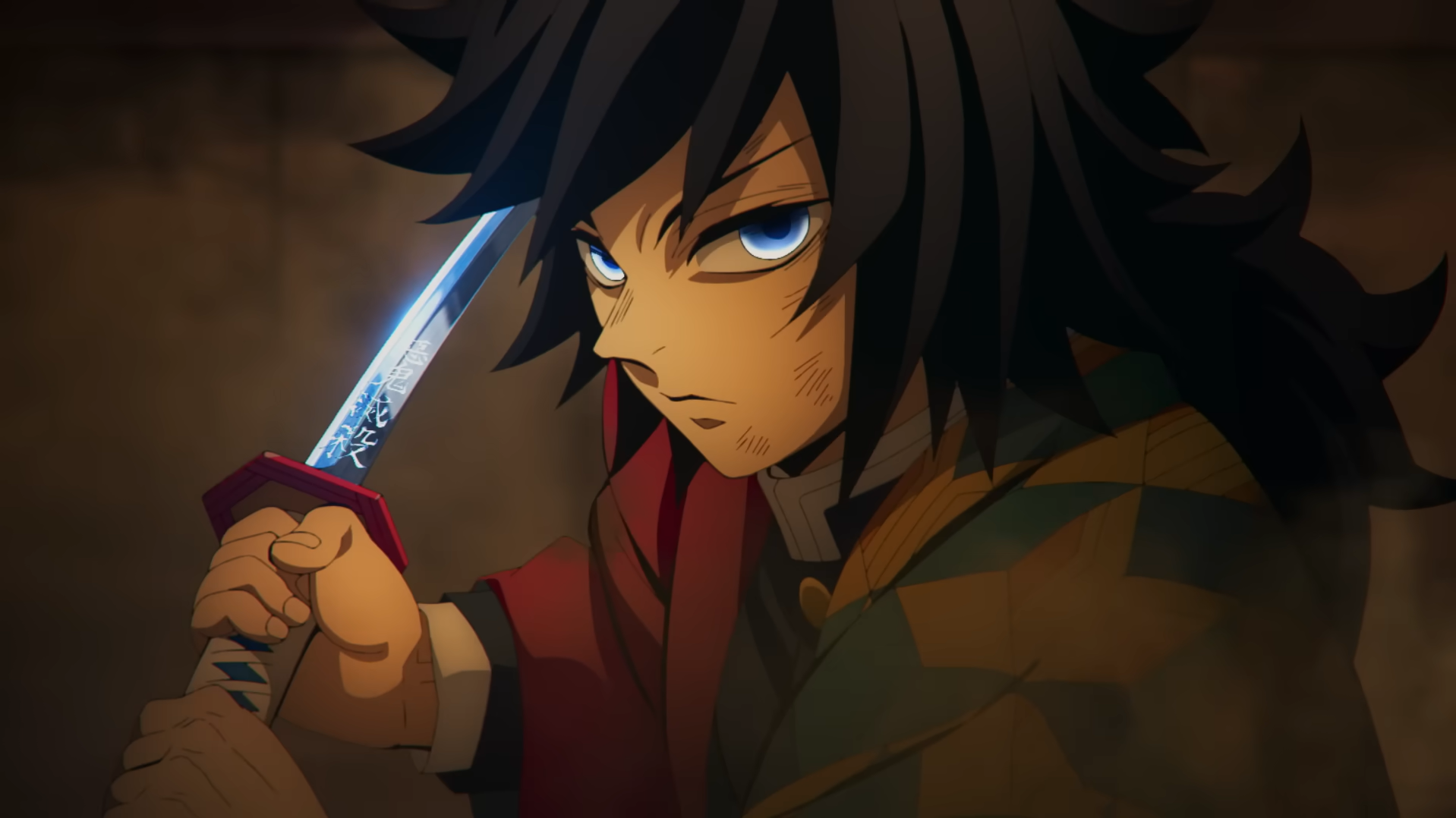
Fortunately, I have saved the best for last, as Giyu is by far the most competently written character in this Shonen franchise. While he isn’t in the series that much, his presence at the start of the story establishes his inferiority complex and survivor's guilt, and that drives the justification for his absence through the middle portions of the plot and his subsequent return. His role in the previous season and this film serve to progress his character in compelling ways. Despite Tanjiro being an overall bland protagonist, the shining element of his goody-two-shoes personality is how he shows mercy and compassion to both friends and foes.
It’s these facets that propel Giyu’s convictions during his fight against Akaza, two characters with similar thematic upbringings duking it out, one person accepting and the other rejecting Tanjiro’s principles. Character motivations that allow the action to be emotionally investing. Even the horrendously placed and paced flashbacks during the battle didn't fully detract from my enjoyment.
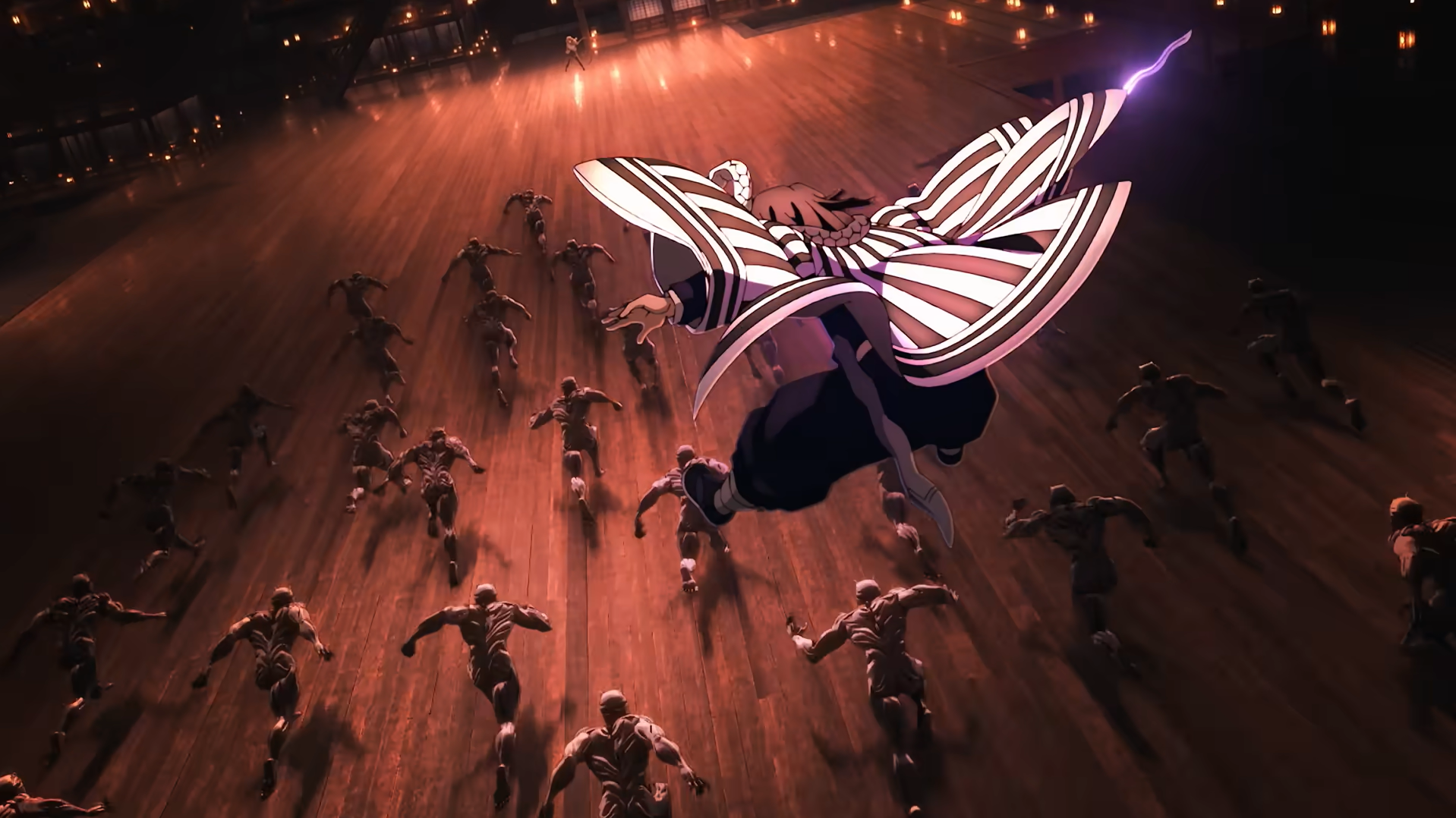
Beyond the atrocious pacing and underwritten characters, one aspect remains consistently strong, witnessing the beginning of the end for Demon Slayer: a sense of finality. Even within this initial section of the arc, both opposing sides suffer significant injuries and losses. It has me curious to see how our heroes are going to pick themselves up when a chunk of the main players are physically bloody, beaten, and broken, barely surviving these entry-level clashes as more powerful demons loom over them. It’s an effective, nail-biting cliffhanger.
This atmospheric essence extends to the setting as well. I’ve already criticized the underwhelming usage of the castle in the action thus far, but it definitely passes the rule of cool vibe check as a final boss domain. Time is of the essence for the Hashira to locate and execute Muzen, to end their war once and for all. The sword wielders are on the cusp of succeeding, yet the ever-expanding nature of the labyrinth means they continue to grasp at a dangling carrot just out of reach. A feeling of desperation to reach the conclusion they all desire.
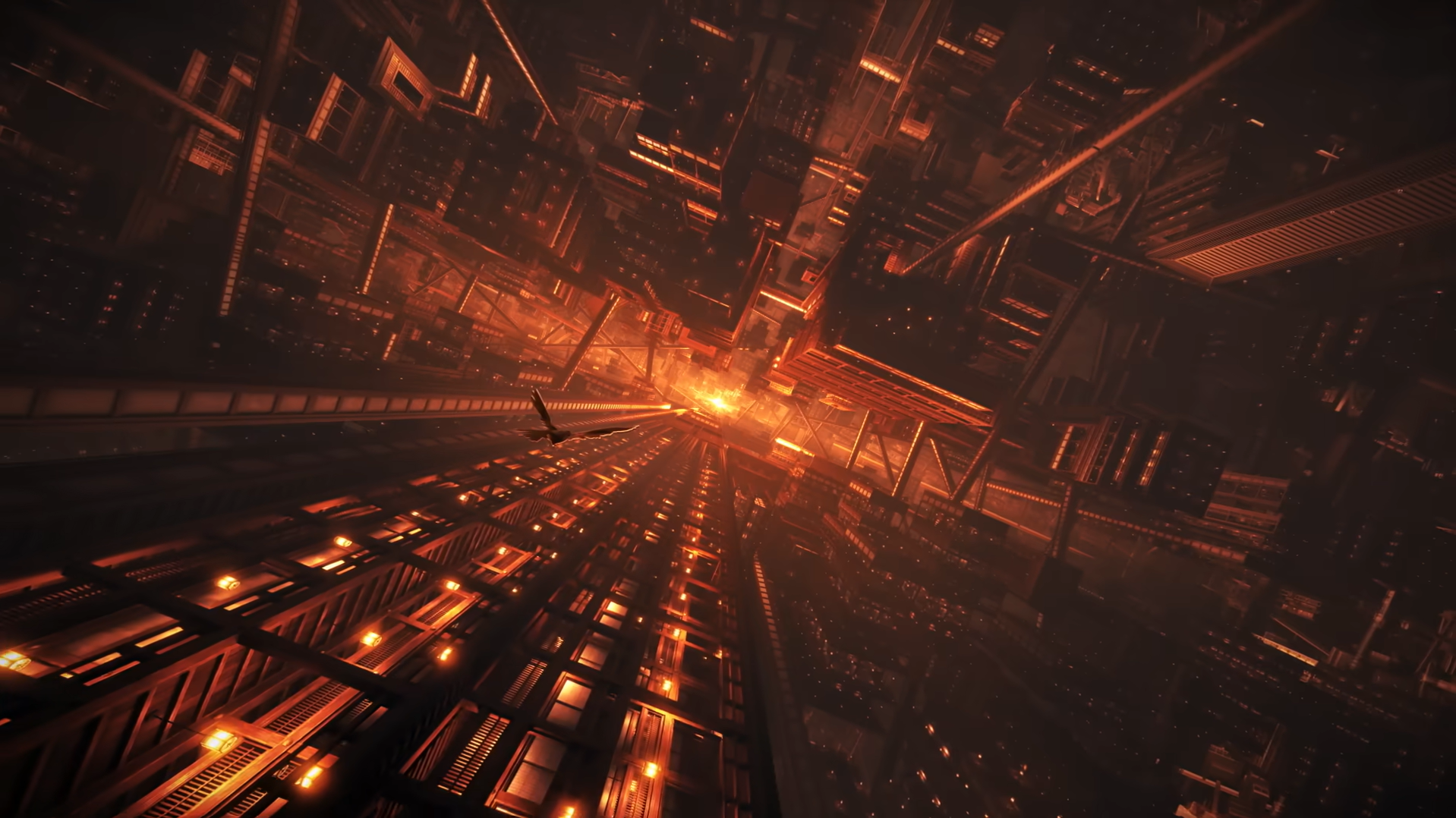
Furthermore, the film occasionally cuts back to a group tethered in a room trying to map out the infinite and ever-changing castle. Feebly and frantically attempting to make sense of an incomprehensible space to give the Hashira a fighting chance in this high-stakes game of hide and seek. Many of the room’s occupants are fresh faces that barely take up the movie’s runtime. Yet I was surprised how much I was engrossed in their struggles. The narrative informs their characterization and desperate plights, which in turn feed into the larger story. Kind of a bummer that these brief appearances of supporting characters demonstrate better writing than most of the members of the Demon Slayer Corps.
Oddly enough, in spite of my cascade of criticisms, I do recommend watching this film while it's still in theaters. Despite the narrative being an atrociously paced and structured mess, Demon Slayer's aesthetics are an artistic achievement that needs to be seen and heard to be believed.
Demon Slayer: Kimetsu no Yaiba Infinity Castle
Below Average
Demon Slayer: Infinity Castle captures the look and feel of a cinematic masterpiece. A sheer visual and auditory spectacle that gave me goosebumps, witnessing the artistry on display, and pondering the hardworking human hands that went into making this vision possible. Regrettably, a turd can do the sickest backflips and sword clashes, but at the end of the day, it’s still smelly and gets crap everywhere as it recounts a flashback on its journey of getting squeezed out of the rectum. It's a disaster of screenwriting, hampering what was once an enjoyably passable read due to its failure to translate the page to the screen. If the first third of this elongated adaptation of the final arc is any indication of how the next two films will go, then we're in for potentially five more gaudy hours of the most artistically stimulating pile of dookie in cinematic history.
Pros
- Stunning animation and sound design
- Foreboding sense of finality
- A few strong character payoffs…
Cons
- …outnumbered by the rest of the lackluster cast
- Abysmal and repetitive use of flashbacks
- Excruciatingly drawn out adaptation of a short story
- Fights rarely take advantage of the Infinity Castle
- This reminds me of the abysmal and repetitive use of flashbacks
